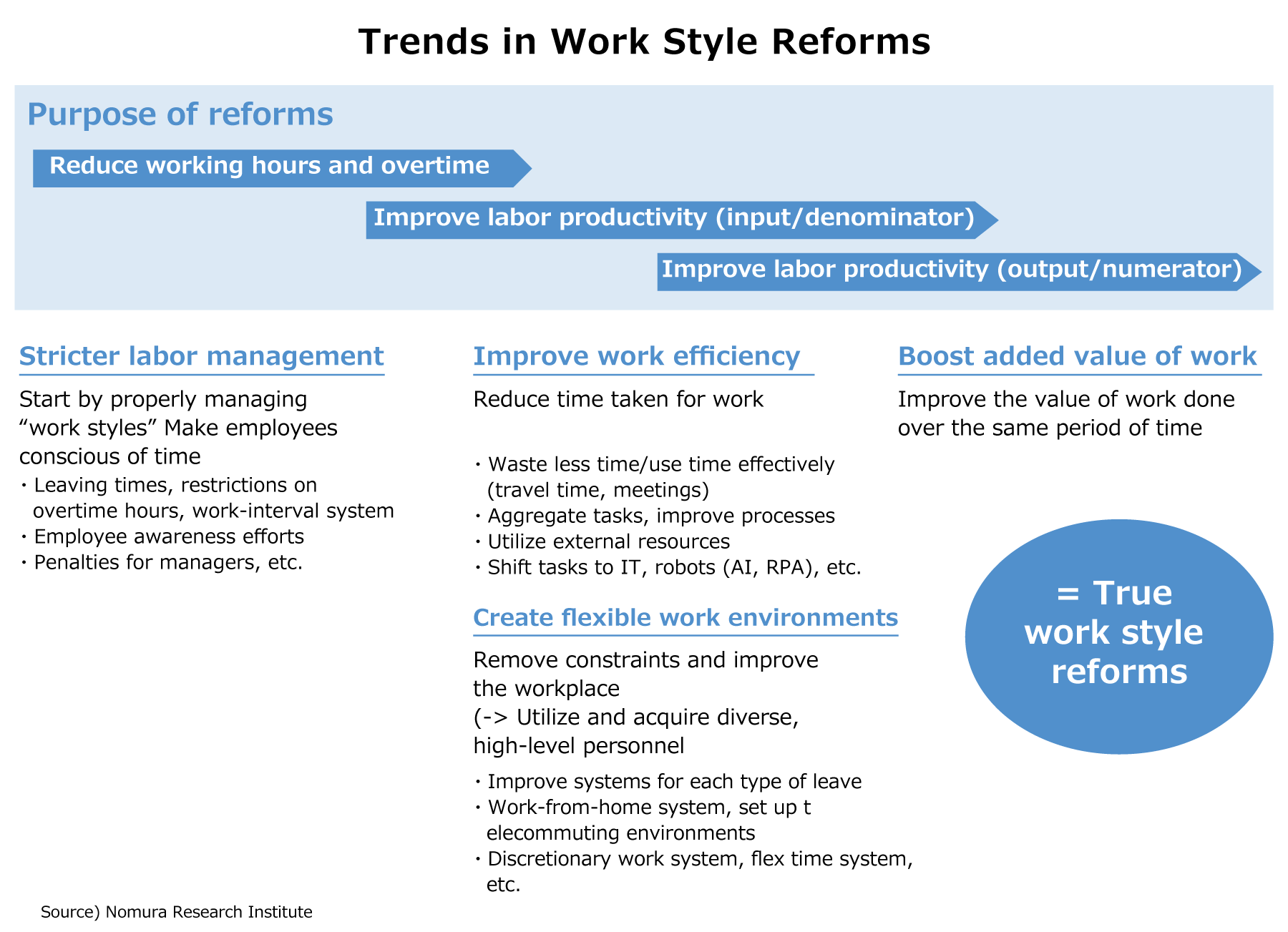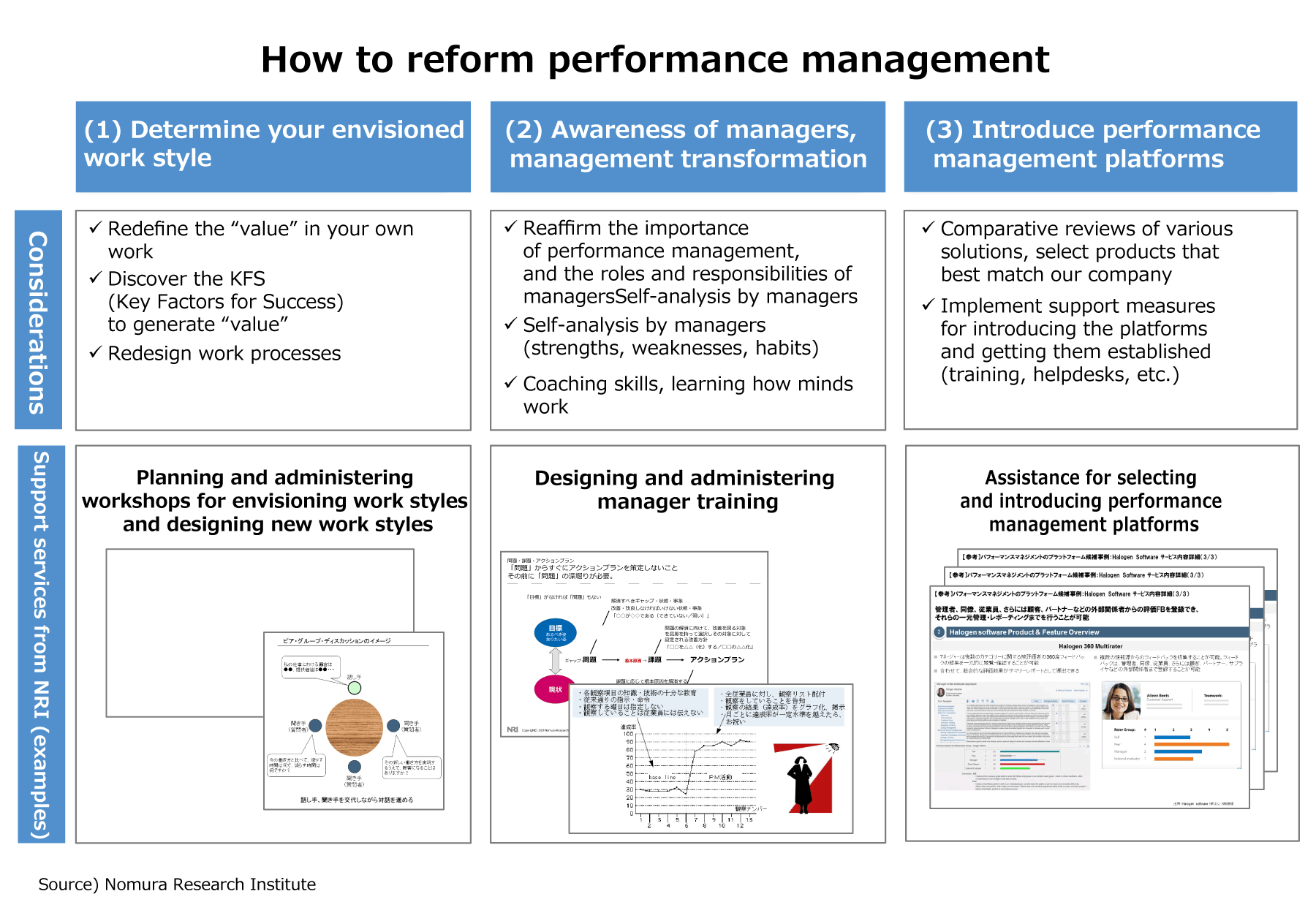
What is a True “Work-Style Reform”
Ever since the Japanese government first advocated a work-style reform bill back in 2016, companies have taken the opportunity to actively pursue their own work-style reforms. These initiatives have largely focused on reduced hours and operational streamlining, for instance through eliminating long working hours and automating routine work using AI and other cutting-edge technology. NRI, however, believes that a “true” work-style reform that produces results is about more than time-saving—it’s a matter of improving operational quality. We spoke with Hiroshi Kurosaki, who helps corporate clients to build administrative management systems and to design and run their HR development programs, about the key points to achieve “true” work-style reforms with added value.
Aiming for a True Work-Style Reform That Goes Beyond Work Hour Reductions
――What is the current state of work-style reforms among Japanese companies?
What many Japanese companies are engaged in as their present goal is to eliminate long working hours. There are all sorts of efforts being made in this regard, including internal calls for slashing unnecessary overtime, and policies for turning off office lights and restricting PC use after certain hour. And with operation reforms using RPA (Robotic Process Automation), numerous companies are moving forward with cutting overtime hours. That said, some companies are now confronting new concerns, namely that these reforms might be cutting into necessary working hours, or that staff members are ending the day without having completed important work. If all you’re doing is to shorten working hours, you’re only reaching one milestone on the way to work-style reforms. True work-style reforms require companies to enhance the very value of the work they do.
――What exactly is required for a true work-style reform?
Well, the goal of a work-style reform is to improve labor productivity. Labor productivity is a division of work outcome by time, and so given the ongoing improvements being made with long working hours, I think what companies need to consider now is how to raise the quality of the numerator in that equation: the work. To put it another way, what’s needed is to rethink the value and the significance of work on an individual employee basis. It’s said that in ten years’ time, advances in AI and other technologies will have greatly increased the amount of work that can be done without human labor. I think that to be ready for that future ten years down the road, companies and their employees need to start preparing right now. That means we have to create systems that enable individuals to do better-quality work with higher added value within the same amount of time.

Performance Management Reforms as an Approach
――Given these circumstances, what kinds of things can be done to achieve work-style reforms?
NRI is proposing that companies undertake “performance management reforms”. Performance management is an HR management method for bringing out the abilities and motivation of your personnel so as to produce stronger results. In the short term, this will lead to better performances from subordinates and teams, while in the medium and long terms, it will help strengthen your organizational capabilities through human resources development. The aim is for supervisors and the company itself to support the work-styles of the employees so that the latter can accumulate a variety of experience and enhance their value as individual members, and thereby improve the condition of the company overall.
There are three important elements in carrying out performance management reforms. The first is establishing a desired work-style, which in particular means redefining the value of an individual person’s work. At the same time, you need to have some way of inspiring your employees to work towards the goals you’ve set, and to prepare concrete methods for reforming your work processes. The second is reforming your administrative and management tiers. This means ensuring that your administrative and management-level personnel understand the importance of their own roles within these activities, and furthermore that they have the necessary skillset. You need to work towards enhancing communication by raising awareness through workshops or conducting training sessions. Lastly, you have to put rules in place for managing and directing your workers’ individual activities and performance. By establishing a system that lets you visualize the quantitative and qualitative activities of individuals in a timely manner, and allows you to conduct consultations and guidance as appropriate, you can achieve a process for growth that’s optimized for each individual.
――What do employees need to do in order to achieve true work-style reforms?
Every employee should try to look back and reflect upon the work he or she is doing. Reevaluate who your customers are, what kind of value you’re providing, and what elements are indispensable in that process. What companies will be looking to do going forward is to improve the quality and value of the work they do. It’s important that you continue thinking about how you yourself are producing added value, and adopt any necessary measures to improve or invest in yourself.

NRI’s Principal
NRI’s Principals have high level of expertise in specific markets or solutions.
As leading consultants, they have been leading innovations for society and NRI’s clients.
NRI’s Principals create new businesses, commit to clients and have responsibilities to solve our
client’s issues.
Profile
-
Hiroshi Kurosaki
* Organization names and job titles may differ from the current version.